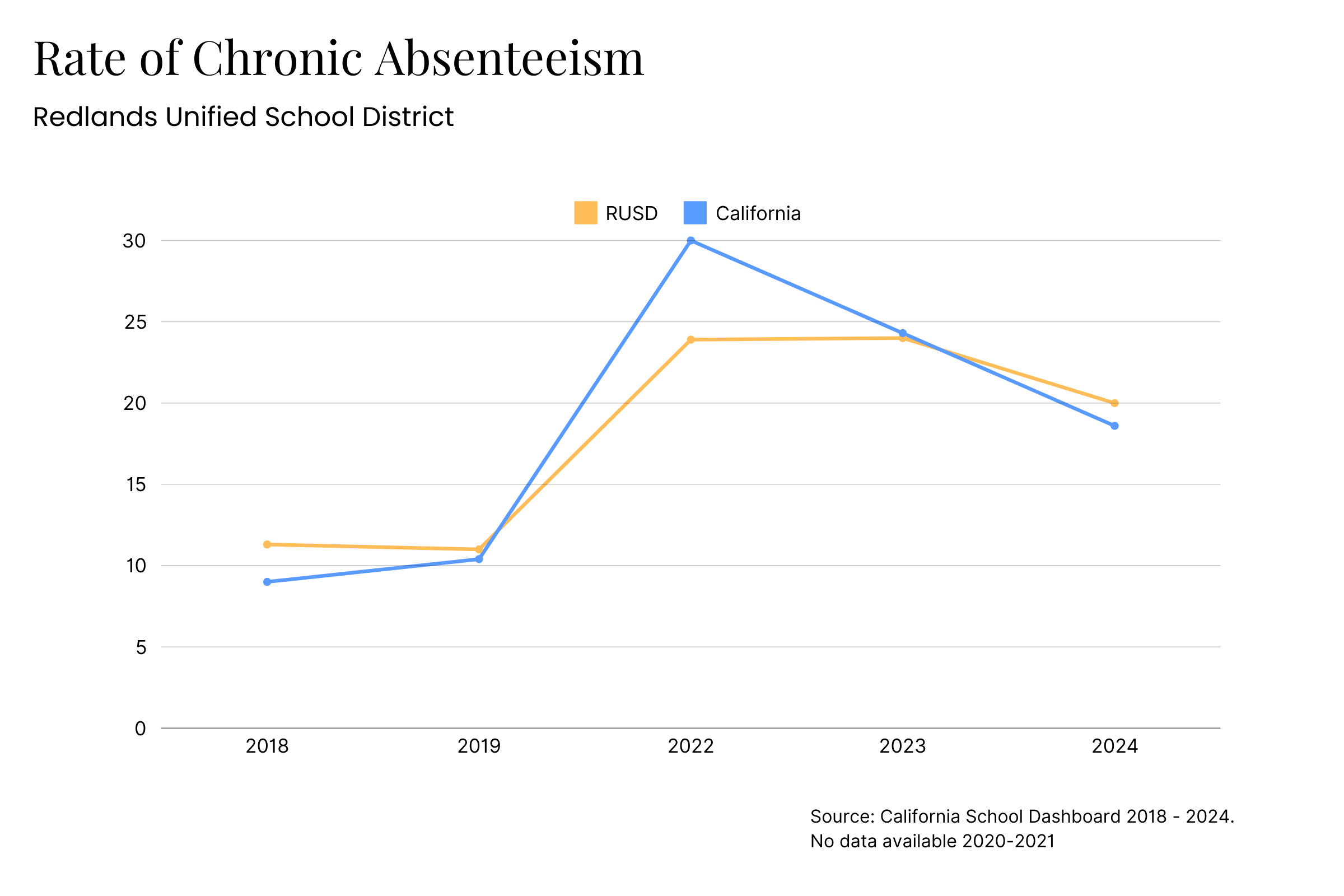Redlands proposes major changes to truck traffic routes
New map reduces neighborhood routes, adds Kansas Street connection and concentrates truck traffic to northeast Redlands.
Across the district, about 20% of K-8 students are chronically absent, with some schools hitting nearly 40%.

REDLANDS, Calif. — Chronic absenteeism in Redlands Unified School District has reached alarming levels, with 20.1% of K-8 students missing 10% or more of instructional days in the 2023-24 school year.
Why it matters: The district has seen its chronic absenteeism rate more than double since the pre-pandemic era. In the 2018-19 school year, only 11.4% of students were chronically absent. Now, that figure stands at 20.1%, affecting one in five K-8 students.
Details: While the district as a whole reduced chronic absenteeism from the previous year, with a 4% decrease, most schools maintain troubling rates.

Lugonia Elementary tops the list with the highest rate, jumping from 31% in 2021-22 to 39.9% in 2022-23, an 8.9 percentage point increase. Recent data shows that Lugonia Elementary improved slightly and had a 38.8% chronic absenteeism rate for the 2023-24 school year.
All schools in the district improved in the 2023-24 school year, however there is still a long road ahead.
RUSD schools where more than 20% of students are chronically absent include Bryn Mawr Elementary, Clement Middle, Cope Middle, Franklin Elementary, Kingsbury Elementary, Mission Elementary, Moore Middle, Smiley Elementary and Victoria Elementary.
The California School Dashboard, a tool used by the California Department of Education to report on various educational indicators, defines chronic absenteeism as missing 10% or more of instructional days. For this indicator, unlike others, a lower percentage is the desired outcome.
The impact: Chronic absenteeism has far-reaching consequences for students' academic success and future prospects. Students who are chronically absent in early grades are much less likely to read at grade level by third grade, a critical milestone for future academic achievement.
The Department of Education reports significant disparities in chronic absenteeism rates among different racial and ethnic groups. Compared to their white peers, American Indian and Pacific Islander students are over 50% more likely to miss three weeks of school or more, while Black students are 40% more likely and Hispanic students 17% more likely.
Students with disabilities face even greater challenges, being 1.5 times more likely to be chronically absent than students without disabilities.
The impact of chronic absenteeism extends beyond elementary and middle school. A study of Utah public school students found that even a single year of chronic absenteeism between eighth and 12th grade was associated with a sevenfold increase in the likelihood of dropping out.
High school dropouts often face poor outcomes later in life, including increased risks of poverty, diminished health and involvement in the criminal justice system.
Moving in the right direction: According to a district spokesperson, there was a 50% increase in student attendance during the 2023-24 school year.
“This positive trend reflects our commitment to the 2024-25 attendance initiative, "By Name, By Need," which focuses on addressing the individual needs of each student to ensure their consistent engagement and success in school,” Christine Stephens, the public information officer for RUSD, told Community Forward via email.
While Redlands Unified schools have seen improvements, their chronic absenteeism rates remain slightly higher than the state.
Zoom out: The persistently high rates of chronic absenteeism in Redlands Unified reflect a broader trend across California following COVID-19 school closures. Pre-pandemic, the state’s chronic absenteeism rate sat at around 12%. It skyrocketed to 30% in the 2021-2022 school year but has steadily decreased the past two years to about 19%.
This issue is not just a matter of academic concern; it also has financial implications for schools. In California, state funding for schools is tied to attendance rates, making the recovery of regular attendance crucial for district budgets.
This article was originally published Jan. 13 at 1:41 p.m. It was updated on Jan. 17 at 10:40 a.m.
Sign up for our weekly newsletter